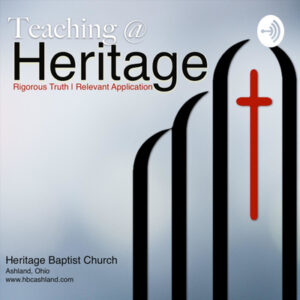
(Text and Audio)
Title: Identifying False Teachers
Jesus’ famed “Sermon on the Mount” which we have been studying in late September runs from the beginning of chapter 5 of Matthew to the end of chapter 7. And in this last section of the sermon, beginning in chapter 7, Jesus talks to us a lot about identity.
He talks about identity when he tells us not to judge others. He tells us we must identify our own problems before we can hope to identify and treat other’s problems.
He talks to us about being able to identify what is holy and who are dogs.
He talks to us about being able to identify a good gift from a bad gift.
And, most recently he talks to us about the identity and difference between a wide gate presentation of the Gospel and a narrow gate presentation of the Gospel.
Today, we will again wrestle in a direct form with the concept of identity, and it focuses on being able to identify a false teacher. Jesus admits, this can be tricky, because false teachers often appear to be, and even sound orthodox. But in order to protect ourselves, our children, the Church, and the message itself, it is imperative that we know how to identify false teachers.
(read/pray)
Today’s sermon will be broken into two sections. In the first section we will look at how one can determine a potentially false teaching or teacher, and in the second section we will look at what scripture says some of the common fruit of false teaching is…in other words, what false teaching, if not rooted out, can do to damage the local Church.
I. What is the best litmus test?
The first question we must ask is “What is the best litmus test?” (Explain a litmus test). What is the most accurate way to determine a false teacher. Now, again, this isn’t a false teaching, that we would determine by the strength of scripture.
If a teaching were not in line with Scripture, hopefully, we’d be able to identify it fairly quickly, based on the fact that we ourselves are familiar with Scripture. And, really, this is exactly what we did one week ago today. Last week, during the sermon, I used two quotes from Rob Bell and another four from Joel Osteen and immediately alarms went off in your head, red flags were raised, many of you gasped or chuckled.
Why?
Because your knowledge of scripture immediately told you something was wrong with those quotations. They were not measuring up to scripture.
So it should be easy to identify false teachers, right? They should walk in the church and proclaim, “Jesus wasn’t really God!” or “The Story of Noah’s Ark is really an allegory about about faith.” or “Scripture really can’t be trusted completely.”
Unfortunately, it doesn’t work that way. Look at verse 15. (read) Jesus says that by all accounts they look like regular believers. They have the right clothing, they seem to say all the right things, they fellowship with us willingly.
So how will we know what they are really about? (Take Answer: Fruit.)
And, fruit of course, means simply the thing that they produce. The thing that they bring forth.
But it’s more than that. It’s more than just looking at the fruit. If you go out into an orchard right now, in late spring, it should be rather easy to identify what type of tree and what type of orchard you are walking through…why? Because the fruit is evident, it is all around you.
Now, I don’t about you, but if you take me out to an orchard in the dead of winter and ask me to identify the tree, I’m going to struggle. Trees pretty much look the same to me when their is no identifying fruit.
And here’s the key. In order to identify that tree in the dead of winter, what do I need to do?
Wait. Let time pass. Eventually that tree will bring forth it’s fruit and identify itself. And Jesus tells us plainly in verse 18 that a tree can only produce the fruit of its nature. An apple tree will not spontaneously and miraculously produce an orange.
So let me return to our first question: What is the best litmus test? In other words, how do we identify a teacher as righteous or false?
Answer: We examine their fruit as it comes forth over time.
II. What are some of the fruits of a false teacher?
So the second thing I want us to consider is this: What if we don’t identify a false teacher? What happens then.
First let’s throw out some ideas on how we may miss a false teacher:
- We want to believe the sheep skin.
- We like what they say.
- We don’t show patience in identifying them.
- We don’t know how to identify false teaching.
The potential results: (As outlined by J.I. Packer)
- Controversies will arise (I Tim 1:3)
- Controversies will lead to division (I Tim 6:3,4)
- The faith itself can be harmed (2 Tim 2:18)
- Self-destruction can result (2 Pet 2:1)
Close:
Three stories from HBC’s history
- Only the Fox’s and Ronks and Mary and I were here when this happened, so without sharing names, let me tell you a story. (Deacon from another church that many thought should be fast tracked.)
- Mike Ringler was here for three years before I asked him to consider becoming a deacon, and then I trained him for two more years.
- As a rule, I take time adopting new members into our Church. Why?